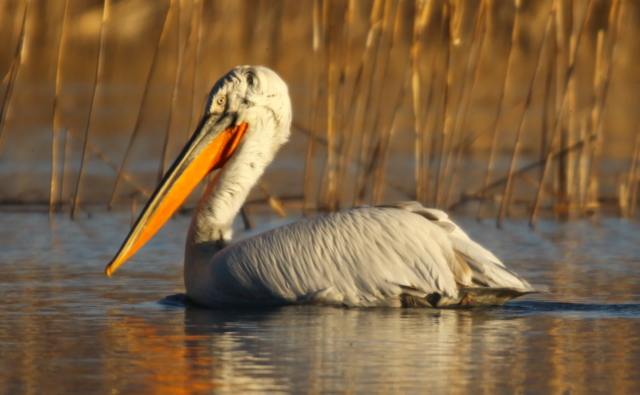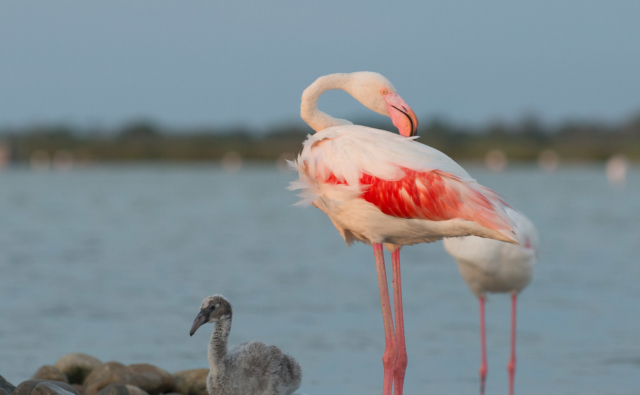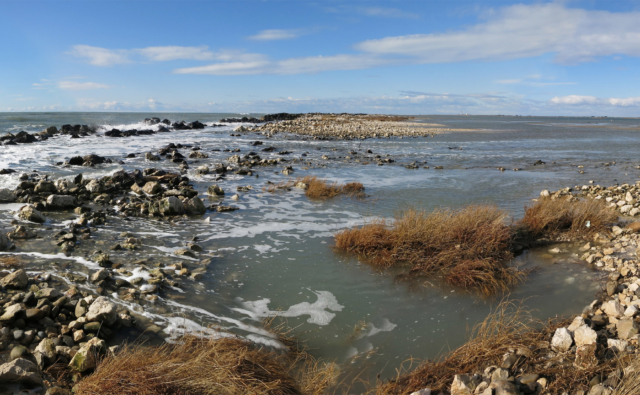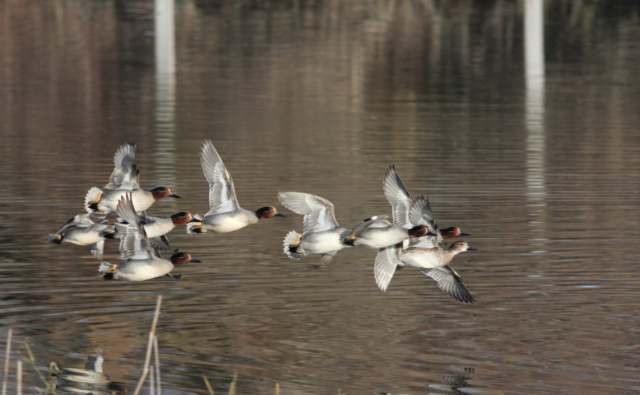What is avian influenza?
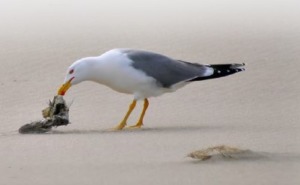
Avian influenza viruses (AIVs; also known as bird flu viruses) have probably been circulating for millennia in their reservoir of waterbirds, especially Anatidae (geese, ducks, swans) and Laridae (gulls and terns). They are extremely diverse: 16 types of haemagglutinin (H) and nine types of neuraminidase (N), the two surface proteins used to classify AIVs into subtypes, have now been identified in birds. Of these subtypes, most are low pathogenic (LPAI), causing little or no symptoms in the individuals carrying them. On the other hand, the H7 and H5 subtypes can mutate to become highly pathogenic (HPAI). They are then highly virulent and can cause significant mortality in both livestock and wildlife.

Historically, outbreaks of HPAI transmission began to cause concern when they resulted in severe losses on duck and chicken farms in the mid-1990s in Southeast Asia. Within the huge reservoir that these farms provided for sustaining and spreading them, highly pathogenic H5N1 strains began to diversify and spread across the Asian continent. In the winter of 2005-2006, this virus spread to Europe via the trade routes from Asia to Europe via Russia (Gauthier-Clerc et al. 2007). Subsequently numerous cases were reported on farms, and the virus spread to several African countries, including Egypt and Nigeria, due to the importation of chicks for factory farms. In Europe, the spread continued westwards, partly stemming from the movements of wintering wild birds driven by a cold wave from Eastern to Western Europe.
How is it spread among human populations, livestock, and wildlife?
Throughout this period, the main issues associated with the circulation of HPAI were economic: (i) farm mortalities and culling birds, and (ii) the costs associated with the biosecurity measures put in place. There were also serious public health concerns when the first H5N1 HPAI strains arrived in Europe. Globally, several hundred human cases of H5N1 infection (861 reported to the WHO), including 455 fatalities, were reported from 2003 to 2019.
Fortunately, however, to date, H5N1 strains have not acquired the ability to transmit from human to human. Most human cases have been associated with farmed bird-to-human transmissions and the number of cases has been very limited compared to the alarming numbers feared when the virus started circulating. Similarly, at the very beginning of the 2005-2006 circulation episode, the high mortality of Bar-headed Geese (Anser indicus) in Qinghai Lake, China, led to fears of high impacts on wildlife. Some of these geese turned out to be semi-domesticated as they were fed to be sold, and the conservation issues associated with HPAI circulation remained low for a long time.
What is the situation in France and how is the Tour du Valat involved in the research on the circulation of avian influenza in wildlife from 2006 to 2020?
Since 2006, the Tour du Valat has been one of the research organisations that have contributed to a better understanding of the dynamics of AIVs in wild birds. The work carried within Camille Lebarbenchon’s doctoral research showed that the Mallard (Anas plathyrynchos) and the Common Teal (Anas crecca) are the main species involved in the circulation of AIVs in the Camargue. Passerines and Ardeidae, as well as Greater Flamingos, were very rarely carriers of these viruses. Of the 51 strains of AIV isolated in the Camargue in 2006-2007, none was highly pathogenic.
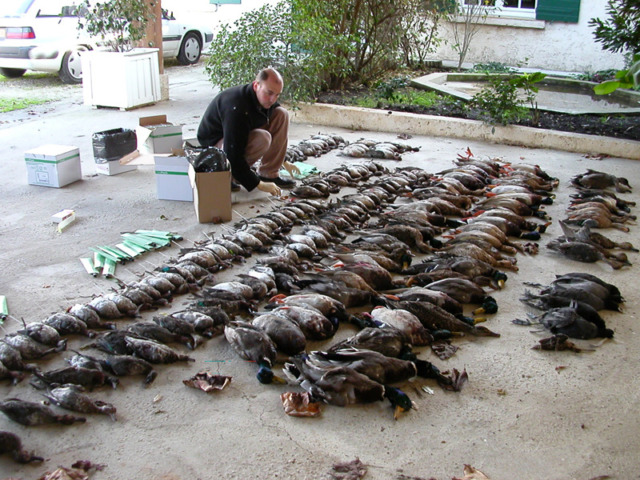
Subsequently, during Marion Vittecoq’s doctoral work, the regular presence of low pathogenic AIVs in a small proportion of individuals was shown in gulls and terns in the Camargue, particularly in the Yellow-legged Gull (Larus michahellis). More recently, the circulation of AIVs in water in the Camargue has been modelled. Indeed, in wild birds, water plays a major role in the transmission of AIVs. This modelling highlighted the wide diversity of potential AIV concentrations in the different areas of the Delta. The highest concentrations are expected in the central part, which combines shallow water with a high winter presence of birds belonging to the species considered to be AIV reservoirs (Vittecoq et al. 2017). This work was carried out with a view to optimising future monitoring of AIVs upstream and during possible crises.
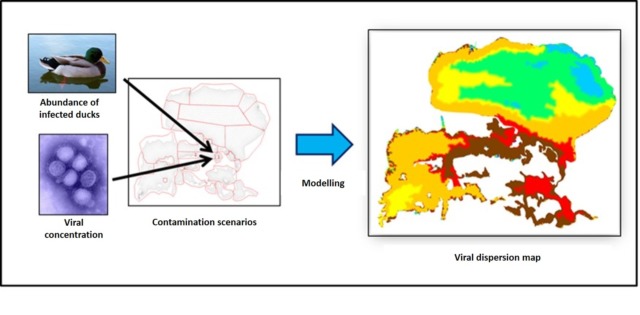
In France, after a period of no detection of HPAI from 2008 to 2014, crises affecting farms have been frequent since 2015. Until 2020, they mainly affected duck fattening farms in southwestern France. In 2016-2017, 92 outbreaks were reported on farms, with heavy associated economic losses. These crises were linked to the circulation of several highly pathogenic H5 strains (H5N1, H5N2, H5N6, H5N8, H5N9). These strains were also commonly found in wildlife in Western Europe, particularly in raptors and gulls and terns. In Europe, in 2016-2017, 58 species of wild birds carrying HPAI were discovered. However, this circulation of HPAI was not linked to mass mortalities of wildlife.
In France, it was shown in 2016-2017 that H5N8 strains of HPAI arrived during the late autumn postnuptial migration of Anatidae. During this season, a limited number of events (around a dozen) of transmissions from wild birds to domestic birds was followed by an explosion in the number of outbreaks on farms linked to the existing contacts within the farming sector. Thus, for several years, there has been regular transmission of HPAI strains from wild to domestic birds.
However, until 2020, mortalities were mainly observed on farms. They were thought to be more likely to sustain and spread these strains due to their multiple interconnections, the high density of birds there, and their high genetic homogeneity. In 2015, an initial alert was nevertheless given by the high mortality observed in colonies of Dalmatian Pelican (Pelecanus crispus) in Bulgaria and Romania due to the circulation of H5N1 strains (Stoimenov, Goujgoulova & Hristov, 2015).
Wildlife hit hard
A new crisis has been spreading to wildlife since 2021. This crisis is linked to the circulation of several H5N1 HPAI strains both on farms and in wildlife. On the domestic side, in addition to duck fattening farms, numerous outbreaks have been observed this year in chicken egg and broiler farms throughout the western part of France, for a national total of 1378 commercial farms affected between August 2021 and June 2022.
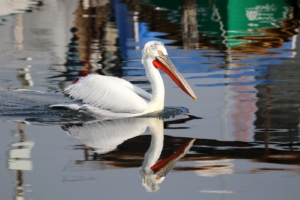
In 2022, unusual wildlife mortalities were observed in several species of seabirds and birds of prey, including the Northern Gannet (Morus bassanus, see interview), Griffon Vulture (Gyps fulvus), Sandwich Tern (Thalasseus sandvicensis) and Dalmatian Pelican (Pelecanus crispus, see “learn more” below). These observations have taken place in France but also in many other European countries as well as in North America. These mortalities are due to the simultaneous circulation of highly pathogenic H5N1 strains in Europe and North America. Africa has also been affected, with mortalities observed as far away as South Africa in African Penguins (Spheniscus demersus) (Dewar et al. 2022).
What does the future hold?
From a conservation point of view, the current situation regarding the circulation of HPAI viruses is completely unprecedented. As Pascal Provost, curator of the Seven Islands National Nature Reserve in Brittany, where thousands of Northern Gannets have died this year, explains in the interview in this special report, we must take stock and adapt monitoring. Moreover, there are serious concerns about the possible impact on species that have not yet been affected, such as albatrosses, which could come into contact with other seabirds carrying such a virus in the coming months.
Directions have already been transmitted, particularly to the teams working in the French Southern and Antarctic Lands, to prevent scientific monitoring from contributing to the contamination of the populations studied (cleaning of equipment and clothing between colonies). In addition, the SAGIR network coordinated by the French Biodiversity Agency, which is in charge of monitoring unusual deaths in French wildlife, remains the point of reference in the event that dead birds are discovered. In general, if three or more birds are found in a context that suggests contamination by avian influenza, the network should be contacted (https://www.ofb.gouv.fr/le-reseau-sagir).
Natural area managers, scientists, and human and veterinary health professionals are thus called upon to continue their joint work in the coming months. They must monitor and endeavour to understand the situation and its implications in terms of medium- and long-term conservation, in a context in which HPAI strains seem to be becoming endemic, with an increased risk of recurrent crises. As it has been doing since the detection of the first cases of H5N1 HPAI in France more than 15 years ago, the Tour du Valat will continue to be actively involved in this work at the interface between science and management.
Acronyms
|
Contact : Marion Vittecoq (e-mail) , research scientist, EcoHealth coordinator.
References
Dewar M.L., Wille M., Gamble A.,Vanstreels R.,Boulinier T., Smith A., Varsani A., Ratcliffe N., Black J. and Lynnes A. 2022 The Risk of Avian Influenza in the Southern Ocean : A practical guide. Ecoevorxiv
Gauthier-Clerc M., Lebarbenchon C., Thomas F. 2007. Recent expansion of highly pathogenic avian influenza H5N1: a critical review. International Journal of Avian Science 149(2) :202-214
Stoimenov G, Goujgoulova G, Hristov K (2020): Analysis of a highly pathogenic avian influenza (H5N1) virus causing the first outbreak in domestic poultry in Bulgaria in January 2015. Vet Med-Czech 65, 435–444.
Vittecoq M., Gauduin H., Oudart T., Bertrand O., Roche B., Guillemain M., Boutron O. 2017. Modeling the spread of avian influenza viruses in aquatic reservoirs: A novel hydrodynamic approach applied to the Rhône delta (southern France). Science of the Total Environment 595:787–800.
